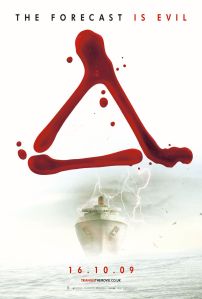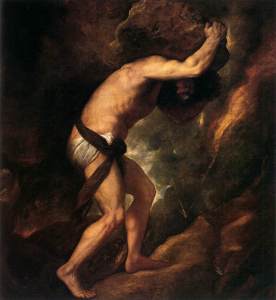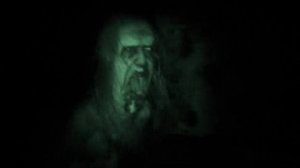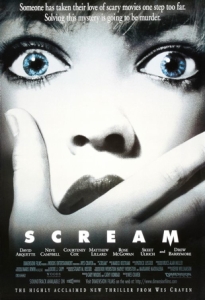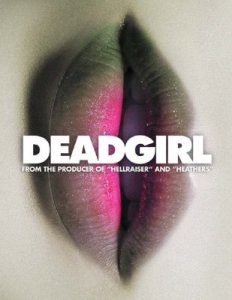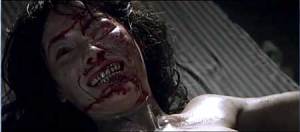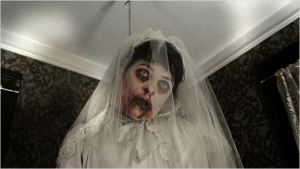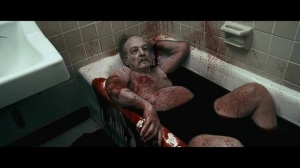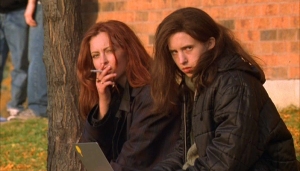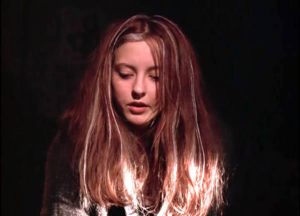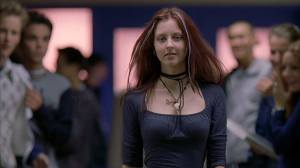Score:
Character development: ††
Atmosphere: †††
Startle Scenes: †††
Depth (horror class concepts): †††
The Monster: ††
The movie is about a group of friends on a yacht trip who then encounters a strong weather disturbance out of nowhere; consequently, they are forced to board a strange abandoned ship where Jess (Melissa George) starts to get weird feelings and Déjà vu’s. The movie mainly follows the perspective of Jess as she tries to solve the weird and fatal things starting to happen.
My initial impressions of the film was that it is the typical slasher film, where the virginal girl figure ends up as the sole survivor. I thought it was going to be a slasher film with a slow and uneventful beginning slowly giving a glimpse of a killer who preys on the group, killing one after the other. However, starting the middle and towards the end of the film, I gradually got the feeling that something much more deeper and mysterious is at work. The mystery of the occurrences kept me wondering who the real killer is. In the end, I found myself far from my initial impressions as I contemplated what really was going on and its philosophical underpinnings. The overwhelming feeling that was induced in me throughout the film was a combination of adrenaline and hopelessness. I can just imagine being in their situation, encountering experiences out of the possible. There is also a sense of familiarity in the film, in a sense that I can easily get stranded in the middle of the sea, where anything out of the ordinary can occur.
In a more theoretical analysis, the movie is more of a metaphysical kind of horror messing with the nature of reality. It blurs the line between reality and fantasy; in fact, until the very end one will still keep on wondering what is really going on. The fear of the unknown and the uncontrollable threat to the body elicits the horror in this case, some of the most primal human emotions.
Scariest/Favorite Scene:
One of the most terrifying scenes of the movie was when the birds were feeding off the many Sally bodies on the upper deck. It just drills on the point that Jess accomplished exactly what she should do to sustain the cycle she was trying to escape. The horror of realizing that your are not your self, that you don’t have free will, and that your are just another element in the sick cycle of death is really a terrifying thing to think about.
Strongest Elements of The Film
The strongest scenes of the movie for me were the beginning and the ending shots (at Jess’ house). It was where the events come full circle. These scenes leaves one with clues of what was really is going on. Moreover, they give the audience a micro-view of Jess’ character. It also served as a point of character development of Jess, one sees a sense of metanoia.
A scene that also stuck with me is when Jess saw the dead birds at the seafront and the horror in her face when she realized that she wasn’t out of the cycle yet. Somehow this scene becomes another catalyst in keeping the story going. I could only imagine the feeling of hopelessness Jess felt when she realized lead her to a kind of self-proclaiming prophecy.
The Myth
It was interesting to see the loose reference to greek mythology. Although to some this seems misleading or distracting, or just a cheap shot; to me it drills the point regarding death and fate. According to greek mythology, even Gods cannot escape Fate. In the movie, Jess, didn’t escape what’s going to happen next even if she thinks she is already out of the loop. In horror movies, the fear of the unknown is a formidable element, and the most primal and ultimate of them all is the fear of death, of fate. In Triangle death really looms in every corner, in every permutation. Some say hell is living the same day over and over again, immortality as a curse; ultimately, the movie succeeds as horror due to it’s ability to elicit such fear, not just of the unknown, but more intensively, the inevitable. Humanity has thrived with it’s ability to control it’s environment, to get out of the cycle of nature and flourish, dominate. Hopelessness, to lose the ability to take control of even one’s life,
Habits
At the beginning, I admit, I was quite irritated that Jess, the “heroine” of the movie, seemed to have lost all common sense and proper reactions, as she didn’t remember what happened in the previous scenes, thus, drilling (killing) her way back to the cycle of terror. But as the movie ended, quite neatly, it all made sense, that the reason why she seemed to have acted counter to what should, is that she was willing to go through everything again just to see and have another chance with her son.
The buildup was quite dry in the beginning, but towards the middle of the movie, I was just as trapped in the cycle as Jess was. So absorbed by the film, I was trying to make sense of the reactions of the character, as well as formulating what will/can happen next, and how will it end. To a certain degree it is a microcosm of how cycles/patterns work in our lives, we will never now whether we are truly out of the loop, and we seem to face the previous versions of ourselves with confusion/anger/caution. Cycles, habits, vices, these are what our daily lives are made off? But when are our choices really our own, and when are we repressed
Horror?
Answering this question require one to face the fundamental question that has haunted critics since time immemorial, the genreational question of what constitutes a horror film? Is it by a common, generic formula? By the history of the whole genre? Just an era of its history that promotes referential classics? or by it’s shock value? I would like to believe that more than anything else horror is referring to the emotion elicited itself; makes it a very specific genre. Banking on the power of emotions, horror is very primal to the human person. Triangle was effective as a horror, because it presented a situation wherein I can really feel my fear of the unknown and the uncontrollable. It succeeds as a horror film due to the fact that it makes me feel the creeps, the threat to life, and the daunting power of fate.
Do I Recommend it?
I recommend this movie especially to those who love a little twist in the psychological thriller genre. Expect a cycle of twists and turns that keep you interested in whats going to happen until the last scene. Be prepared for some mind-fucking stuff.
#111514 #Triangle
